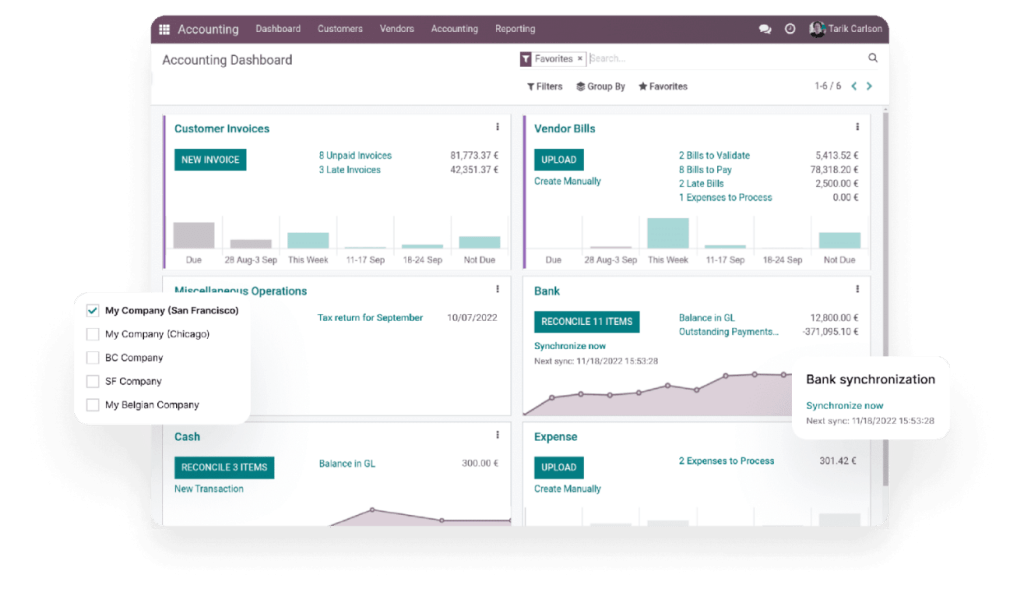Implementing an Enterprise Resource Planning (ERP) system is a significant undertaking for any business. It requires careful planning, effective execution, and a clear roadmap to ensure success. Odoo ERP, a versatile and feature-rich solution, has gained immense popularity among businesses worldwide.
However, implementing an ERP system can be a complex task.In this guide, we will break down the process into manageable steps, helping you navigate through the implementation journey with confidence. So, let’s embark on a journey towards a seamless Odoo ERP implementation.


Setting clear objectives is crucial before embarking on an Odoo ERP implementation. Determine what you want to achieve with Odoo ERP. Are you looking to streamline operations, improve efficiency, or enhance customer satisfaction? Clearly define your goals to align your implementation strategy with your organizational vision.
Building a competent implementation team is vital for success. Select individuals from different departments who have a deep understanding of your business processes. Formulate a cross-functional team with representatives from finance, sales, HR, and IT. This ensures that all aspects of your organization are considered during the implementation process.
Perform a thorough analysis of your existing processes, systems, and data. Identify pain points, bottlenecks, and areas that need improvement. Gather feedback from key stakeholders to understand their requirements and expectations. This assessment will serve as a foundation for configuring Odoo to meet your specific needs.
One of the key advantages of Odoo is its flexibility and scalability. Customize the system to match your business workflows and requirements. Configure modules, create user roles, and define permissions to ensure that each user has access to the relevant information. Tailor Odoo to suit your unique business processes.
To ensure a smooth transition, migrate your existing data to Odoo ERP. Cleanse and consolidate your data before transferring it to the new system. Ensure compatibility with your legacy systems and integrate Odoo with third-party applications if necessary. Data accuracy and integrity are crucial for successful ERP implementation.
The success of your ERP implementation heavily relies on user adoption. Conduct comprehensive training programs to familiarize your employees with Odoo’s features and functionalities. Provide hands-on training sessions, workshops, and documentation to help users navigate the system effectively. Encourage employees to embrace the new system by highlighting its benefits.
Thorough testing is essential before going live with Odoo ERP. Create test scenarios to validate different processes, transactions, and integrations. Identify and rectify any issues or discrepancies discovered during testing. This step ensures that your system is fully functional and ready for real-world operations.
Once testing is complete, it’s time to go live with Odoo. Gradually transition from your legacy systems to the new ERP. Monitor the system closely in the initial stages, paying attention to any performance issues or user feedback. Continuously refine and optimize Odoo to maximize its potential and address any unforeseen challenges.
ERP implementation is not a one-time project; it’s an ongoing process. Establish a support system and assign dedicated resources to handle user queries and system maintenance. Continuously gather user feedback and identify areas for improvement. Regularly update and upgrade Odoo to leverage new features and stay ahead of the competition.
Final Thoughts
Implementing Odoo ERP can be a transformative journey for your business, streamlining operations, and driving growth. By following this step-by-step guide, you can ensure a successful Odoo ERP implementation. Remember, the key to a successful Odoo ERP implementation lies in meticulous planning, open communication, and continuous improvement.
Embrace this comprehensive guide, and leverage the power of Odoo ERP to propel your business towards success. With dedication and the right approach, you can unlock the full potential of Odoo ERP and revolutionize the way your organization operates.